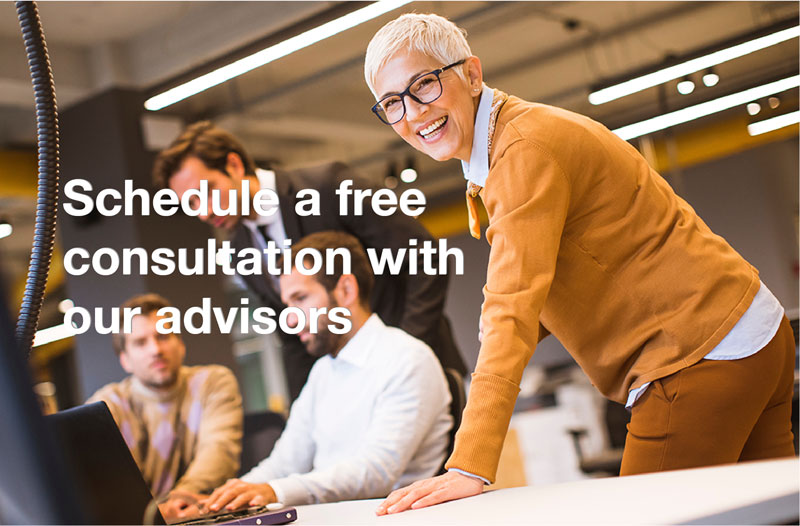Understanding the “Why”
Essential Insights for Achieving Business Success

In his acclaimed TED Talk, Simon Sinek introduced the “Golden Circle” concept. He used various examples to detail the principles of “Why,” “How,” and “What.” I intend to highlight specific instances for our Amplify Now Global program attendees. These examples will illuminate the exploration of the Golden Circle. Sinek observed that many organizations articulate their “What” and “How.” However, few can genuinely express their “Why,” reasons transcending mere profit.
Most businesses have no idea why their clients are their clients
Businesses often believe that product quality, features, pricing, or service drive customer choices. However, many overlook deeper motivations behind these selections. Similarly, this misconception extends to employee relations. Without grasping what cultivates loyalty, can companies truly retain and grow their workforce? Regrettably, many firms base strategies on these flawed assumptions. This oversight muddles the recognition and management of vital success factors
People purchase products because of Why you sell them, rather than What you sell.
Many companies tout features, saying, “We stand out because of X, Y, Z.” However, customers often value a company’s mission more than its products. Instead of highlighting what they sell, successful companies showcase their “why.” This approach communicates from the inside out. The “Why” captivates customers, and the “What” reinforces their belief. In this context, a product’s features become secondary to the driving reason behind its creation. The “What” relates to tangible products, while the “Why” taps into deeper drives. As a result, customers lean toward companies for their “why,” boosting loyalty, retention, reputation, and profits
To help describe the What, How, and Why, these are the three most essential parts:

What: Everyone knows the company’s product or service and can typically describe it adequately.
How: This is your value proposition differentiator, your unique process. Your How gives you a competitive advantage over other sellers of the same product or service. Even more, people need to comprehend this idea thoroughly and communicate it effectively.
Why: Making a profit is not the answer; that is a result. Instead, what is your purpose, your cause, and what do you do to have a meaningful impact on your clients’ businesses and lives? It is a rare individual or organization that comprehends and can convey this message.
Start-ups or scale-up companies can learn the importance of understanding why they exist,
beyond what they offer or how they do it:

- Know Your Why: Understanding why you do what you do can foster loyalty and drive long-term success. It’s more profound than profit; it’s about purpose and impact.
- Avoid Wrong Assumptions: Recognizing that customers care more about your mission and values can help marketing strategies. Misunderstanding can lead to wrong decisions and strategies.
- Communicate Inside Out Emphasizing why before what helps in forming a connection with customers and employees. It leads to higher retention and brand reputation.
- Identifying how your product or service differs through a unique value proposition can give you a competitive edge.
- Employee Understanding: If you understand what makes your employees loyal, you can retain them more effectively. It helps in scaling up without losing the company culture and inherent knowledge.
By focusing on these areas, start-ups and scale-ups can build a loyal customer base, stand out from the competition, and create a more robust and meaningful brand.
For Globalizers, Founders, and Start-ups and Scale-ups: See Some Examples of How Strong Leaders Have a Vision

Car Manufactures Example:
Senior executives from US car companies recently toured Japanese factories to gain manufacturing insights. While the assembly lines appeared similar, a notable difference emerged in door installation. In the US, a dedicated worker tweaks doors for an exact fit. However, this position was missing in Japan. Puzzled, the Americans questioned the discrepancy. The Japanese guide explained, “We prioritize fit during design.” Essentially, the Japanese preemptively address potential issues, tracing back to early design stages. Although both American and Japanese factories produce well-fitted doors, their techniques diverge. By eliminating the door adjustment step, Japan streamlines production, possibly enhancing door durability and safety.
The differences and what companies when going global can learn from this example:
Drawing a parallel to cars, organizational strategies are pivotal in steering a company’s success. Just as some vehicles might receive quick fixes for issues, reminiscent of companies like America’s Door Adjustments opting for short-term solutions – they often lack durability and long-term dependability. On the other hand, top-performing companies meticulously chart their journey from the outset. They align every element of their operation with overarching objectives. Whether in manufacturing or strategic planning, this proactive approach typically fosters sustainable outcomes.
The takeaway is clear: preparation, strategic effort, and adaptability are paramount. Whether a startup or a scaling enterprise, navigating uncertainties is inevitable. Being prepared and possessing the agility to pivot when necessary are indispensable traits. To this end, Amplify’s readiness assessments offer invaluable insights and support.

Aviation Pioneers Example:
The Wright brothers, American inventors and aviation pioneers, created the first successful motor-operated airplane. Their example contrasts with Samuel Langley. Both were highly motivated, hard-working, and understood flight principles. Only the Wright brothers, however, built a functional aircraft.The difference wasn’t in technical abilities or work ethic, but leadership and team engagement. The Wright brothers inspired their team, creating a shared mission and commitment. This unified individual talents into a collective effort, producing revolutionary technology.
The differences and what companies when going global, can learn from this example:
The Why.The Wright brothers’ “Why” was not profit or fame, but a belief in human flight and discovery. They were inspired by a challenge that puzzled humanity and motivated by curiosity to push boundaries. Their “Why” was a human flight vision; they dedicated themselves to it. This deep purpose guided them through failures, inspiring collaboration and commitment. Unlike others, their motivation was passion, not financial or competitive. This alignment led to the first airplane.The lesson is not just hard work and intellect for success but also leadership and team cohesion for transformative innovations.

Apple Example:
In the early days of the personal computer revolution, Apple co-founders Steve Wozniak and Steve Jobs possessed a groundbreaking vision. At that period, computers were predominantly costly, intricate corporate instruments. However, Wozniak, driven by purpose rather than profit, imagined a world where technology was accessible to all. Consequently, he crafted the Apple I and II to be both affordable and user-friendly. Meanwhile, Steve Jobs recognized the potential to catalyze change through this innovation. Beyond being a mere salesman, he viewed Apple as a tool for revolution.
Thanks to his strategic marketing, Apple’s revenue soared: $1 million in the first year, $10 million by the second, and a staggering $100 million by the fourth. Remarkably, within just six years, Apple blossomed into a billion-dollar giant. Yet, Apple’s distinctiveness isn’t solely due to rapid growth or pioneering technology. Rather, it’s their unparalleled drive to challenge established norms across various sectors. In essence, Apple’s triumph hinges on one enduring quality: the capacity to inspire.
The differences and what companies, when going global, can learn from this example
Apple’s “Why” stems from a deep-rooted belief in challenging the status quo and embracing unconventional thinking. Founders Steve Jobs and Steve Wozniak aimed to democratize technology, thereby empowering individuals. They envisioned personal computers as catalysts for transformative changes in our daily lives, professional endeavors, and social interactions. Today, this vision fuels Apple’s commitment to producing user-centric, aesthetically pleasing products. Ultimately, Apple’s “Why” showcases the power of purpose in building a compelling brand and achieving unparalleled success. Their mission transcends mere sales; it’s about igniting inspiration.
For startups, innovation isn’t just about great products or ideas.
It’s about an inspiring vision that motivates your team and captures consumers, sustaining long-term growth and impact.
Engage with Amplify
In summary, Simon Sinek’s Golden Circle concept emphasizes understanding Why, How, and What in business strategy. This principle fosters loyalty, brand distinction, and meaningful growth. For businesses seeking to align actions with purpose, Amplify provides immersive in-person sessions, insights from industry insiders, marketing discussions, networking events, personalized strategy mentoring, and more. Engage with Amplify to explore these transformative implications, enhancing customer satisfaction and creating robust, resonant brands with long-term success



















